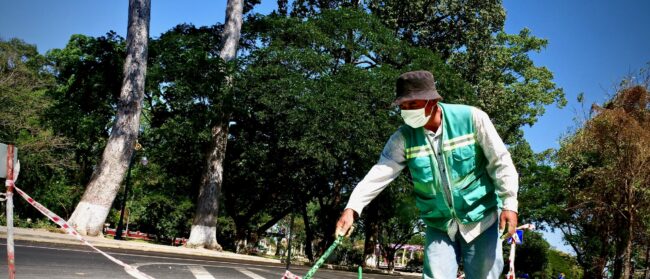A familiar crackling of bamboo-shaped firecrackers pulsed through the air, loud enough to drive mythical evil spirits away. Then a shower of red confetti and clouds of white smoke appeared.
The sights and sounds of a Chinese firecracker, often greeted by viewers covering their ears, is familiar to most where the festival is widely celebrated. It is the unmistakable sign that the Lunar New Year has arrived.

In Malaysia and Singapore, Lunar New Year, also known as Chinese New Year, is one of the calendar’s most anticipated events. But with the threat of further Covid-19 cases and the rise of the Omicron variant, this year’s Lunar New Year celebrations are moving at a different pace.
After two years of celebrations cut short during the first three waves of Covid-19 starting on 25 January 2020, and the recent mass administration of booster shots, many Malaysians are hopeful the streak of muted festivals is coming to an end.
Compared to last year’s Lunar New Year restrictions of family reunion dinners with a limit of 15 family members within a 10-kilometre (6.2-mile) radius in the same district, this year’s loosened virus restrictions have left many planning their holiday visitations.
“It’s been two years of Covid, we need to start living with it,” said Salehhuddin Md Salleh, the deputy director general of policy and planning of Malaysia’s National Department for Culture and Arts. “Most people have received booster shots so this makes it safer to be with family members as well.”
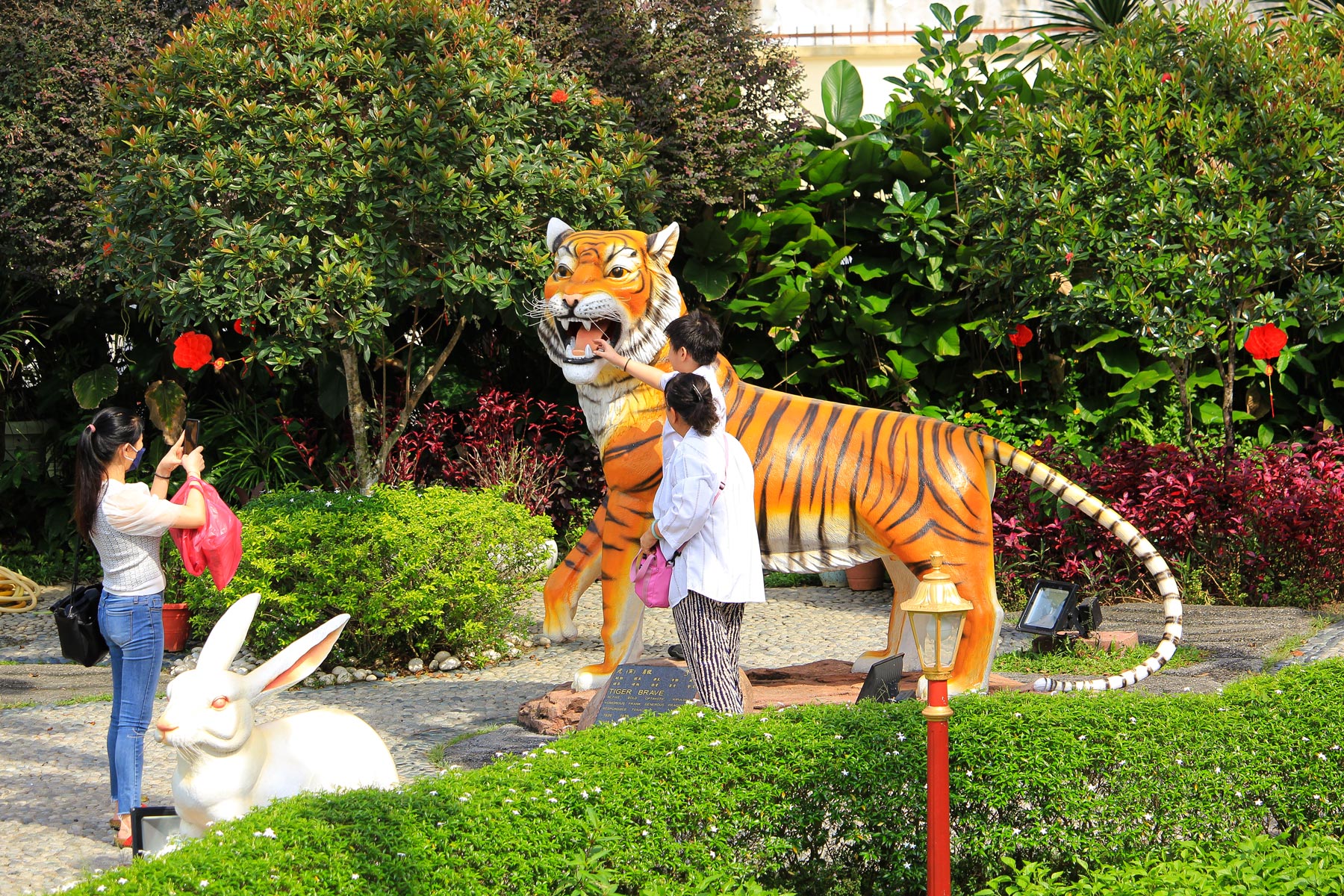


Celebration
The 15-day celebration traditionally begins the night before the new year. Families gather on New Year’s Eve, ringing in the year with a meal. Each dish is carefully prepared to fulfill its symbolic meaning, usually prosperity, wealth and health.
Homophones, words with the same pronunciation but different meanings, are especially influential in the dishes prepared for the reunion dinner and surrounding traditions. Glutinous rice cakes (年糕, nián gāo) translate to “rising higher each year” (年高, nián gāo), mandarin oranges (橙子, chéng zi) echoes the word “success” (成, chéng). Prices usually end in eight (八, bā) as the number rhymes with the first part of “getting rich” 发财 (fā cái).

Dancing lions symbolising the mythical beast called Nian in Chinese folklore are among the main attractions of Chinese New Year in both countries.
Unlike regular days where the city centre of Kuala Lumpur sees plenty of cars and traffic, the city is freed up during Lunar New Year as most Malaysians, ethnic Chinese and people of other heritages travel back to their hometowns, excited to reunite with their families for the occasion.
History and tradition
As of 2021, ethnic Chinese made up the second largest population of Malaysia’s 32 million citizens. The Singaporean ethnic Chinese formed 75% of the nation’s population of 5.45 million.
The ethnic Chinese who first stepped foot onto Malayan soil in the early 19th and mid-20th centuries to escape the Great Chinese famine, which was caused by poor food procurement policies under Mao Zedong and killed over 36 million people, have assimilated over generations. Many now identify predominantly as Malaysians and Singaporeans while maintaining their cultural landmarks.
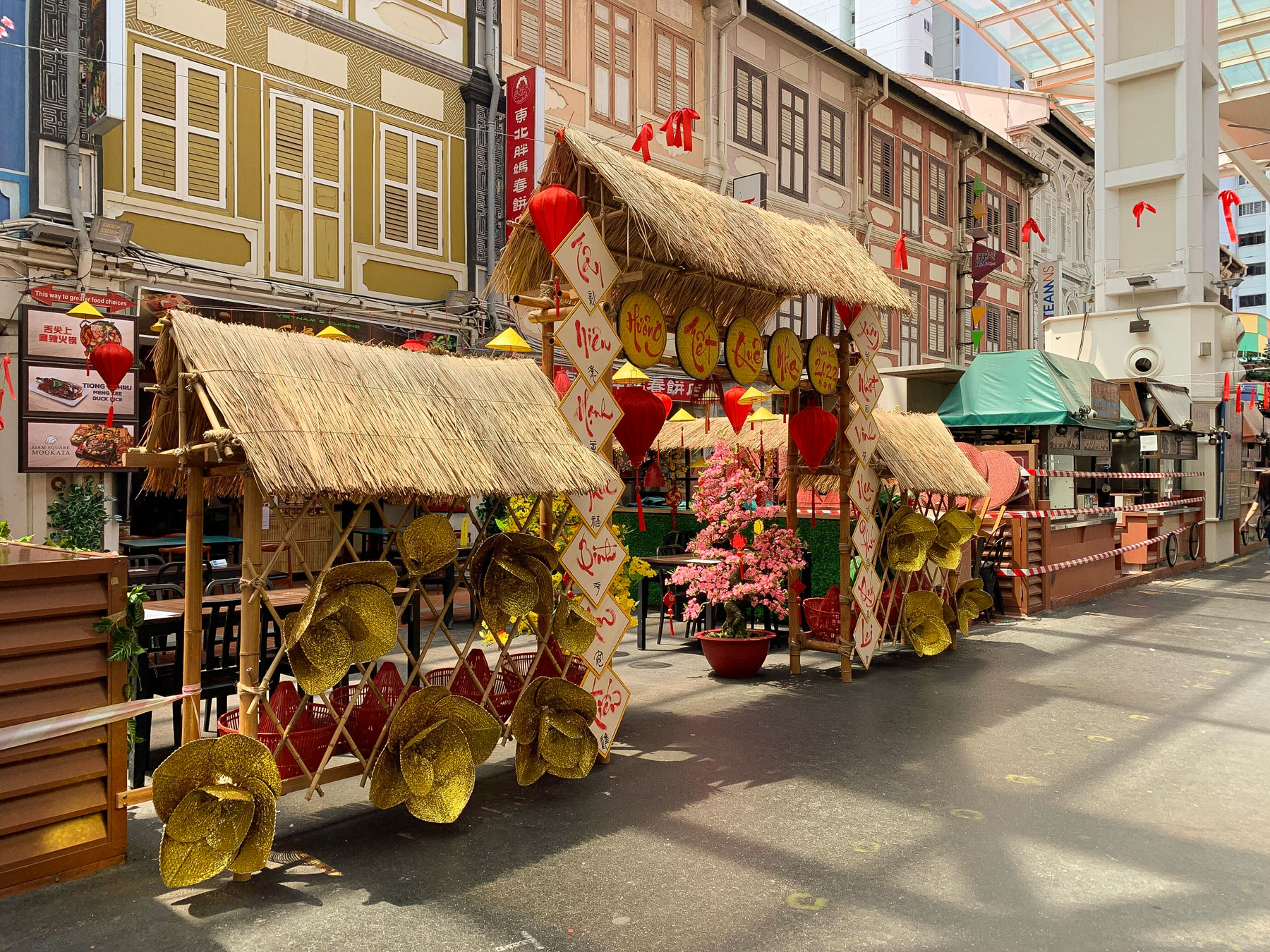
“To the Singaporean Chinese, this is probably the biggest celebration [of the year,” explained Victor Yue, executive committee member of the Singapore Heritage Society. “The extended family comes together for a reunion dinner on Chinese New Year eve and… [people] visit the family, starting with the oldest…like Grandma and Grandpa.”
While family is a focus, Yue believes the occasion also is an important opportunity to embrace Singapore’s multi-ethnic population.
“[For us], it was a time when we invited our friends – Chinese and non-Chinese – to our homes to gather and chat. We have always had Nasi Briyani [a spiced rice dish originating from the Indian subcontinent] ordered so our Muslim friends could also have dinner with us.”
This is the second year Singapore’s 15-day celebration period has been affected by Covid-19 restrictions. Visitor caps of eight people per household allowed pared down gatherings in 2021 but traditional visits to relatives to pay respects was limited to two households per day.
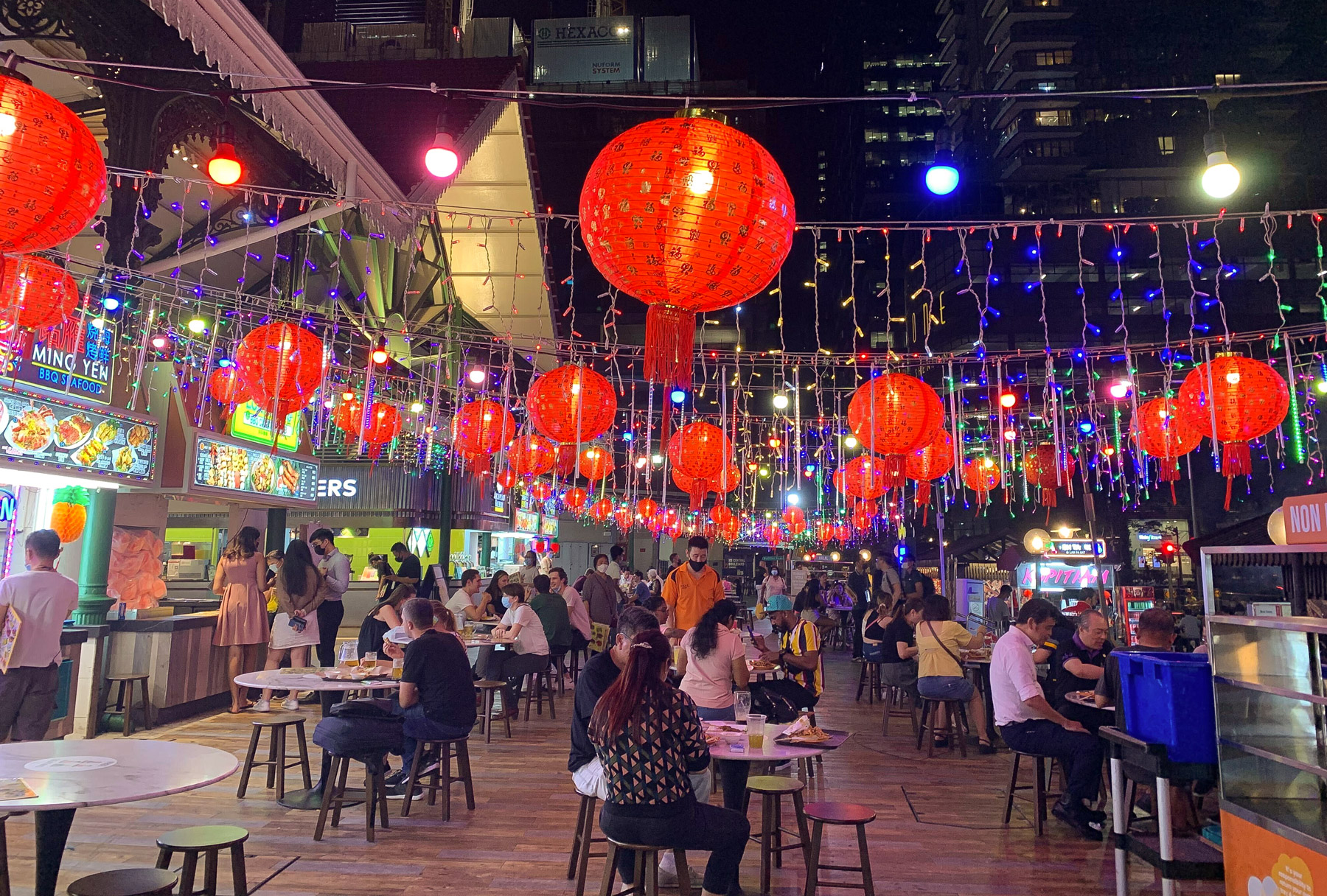
Restaurateurs found their usual uptick in table bookings replaced by a spike in online deliveries and orders. Lo Hei, a traditional auspicious chanting, was muted due to fears that singing spread the virus and replaced by tinny mobile phone recordings of the tunes. This year, as Omicron cases surge in the Lion City, five-person caps on gatherings persist amid recent warnings from finance minister Lawrence Wong to “comply and cooperate with… safe management measures.”
“Covid restrictions have dampened and altered the approach to celebrations,” Yue said. “Colourful noises like the lion dance are being curtailed… while we continue to clean the house [and] buy all the goodies to brighten up the home, there will be less, if not no, visits from relatives.”
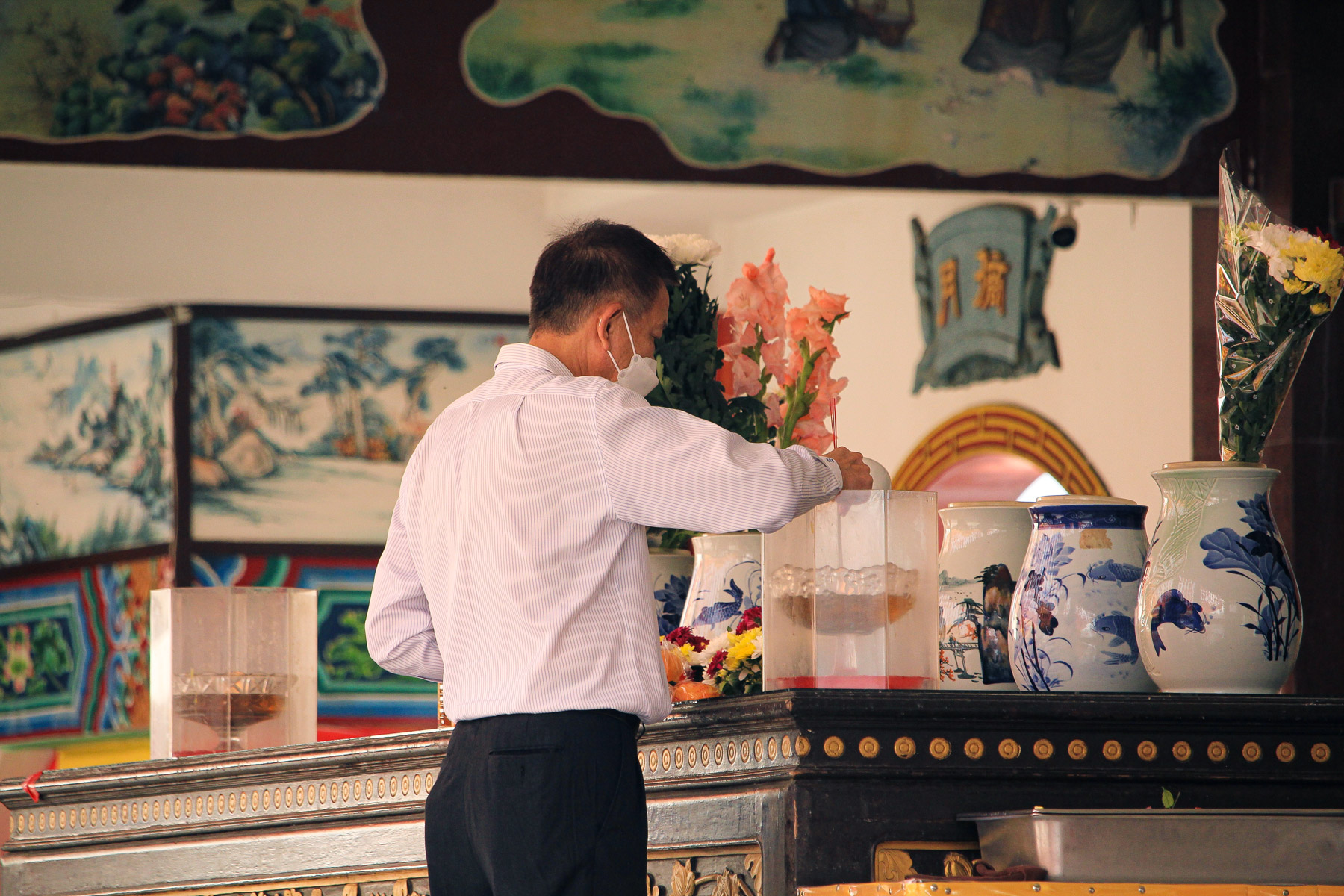
Temples and worship
During the festive season, Buddhist and Daoist temples possess an unmatched energy. Red and gold decorations are displayed on banners, door couplets, lanterns and paper cuttings with messages of prosperity. Devotees burn joss sticks and joss paper in a cauldron as an offering to the gods while loud gongs echo around the grounds. Many participate in kau chim or jiao bei, the practice of asking deities for a divine signal.


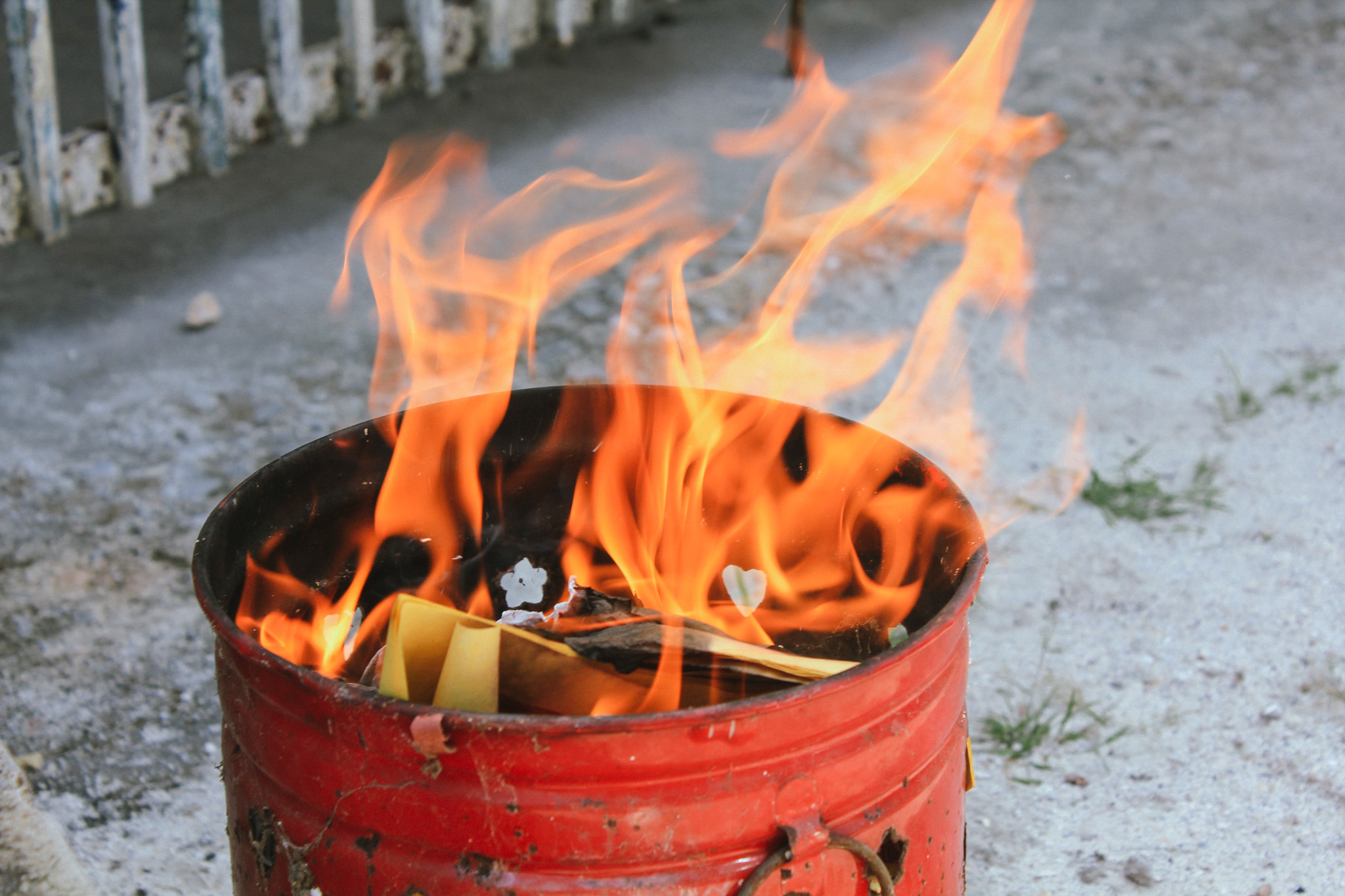
Drawing closer to the new year’s first day, devotees form a line at the entrance of Kuala Lumpur’s Sin Sze Si Ya temple, waiting for a turn to pray for a successful and prosperous year of the tiger. The temple limited the size of groups to 15 to avoid crowding.
In Tanjong Pagar’s Thian Hock Keng, Singapore’s oldest Hokkien temple, a canopy of bulbous red lanterns signaled the arrival of Lunar New Year. The temple was established in 1840 by immigrant businessmen from the Straits of Malacca in homage to Mazu, the goddess of seafarers, and has grown into an inclusive ‘three-in-one’ community, bringing together followers from Buddhist, Daoist and Confucianist faiths.
“You can pay between SGD 68 ($50) and SGD 388 ($287) to have your name hung on one of these lanterns or SGD 88 ($65) for an illuminated ‘light of blessings’ at the back,” explained Chloe Zhao, a temple volunteer. “This year we’ve got almost 900 lanterns.”
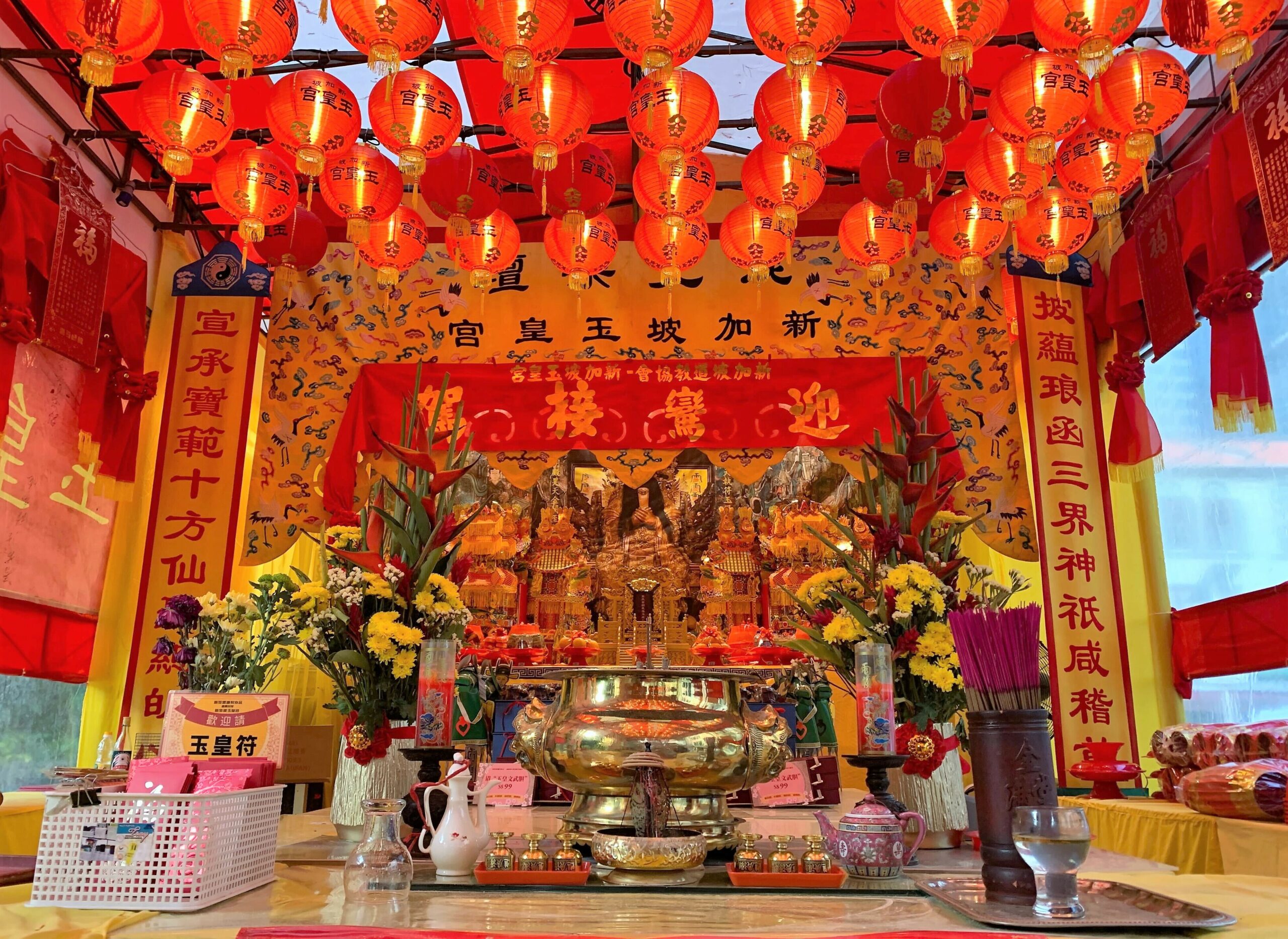

The names are in Chinese, Thai and other languages from across the region. “Mazu is known all across Southeast Asia,” a temple spokesperson said.
The lanterns come in two sizes: small for prayers for individuals and larger ones to dedicate blessings to entire families or companies.
“There are a few company names,” the spokesperson said with a smile. “Business, that’s always the Singaporean way.”
As they prepared for a New Year’s Eve puppet show to welcome this year’s festivities, the temple was poised to see if footfall this year is fruitful. But even during the worst months of the pandemic so far, Zhao said devotees’ enthusiasm seemed undeterred.
“People still came,” she recalled. “Perhaps they just prayed more for good health.”
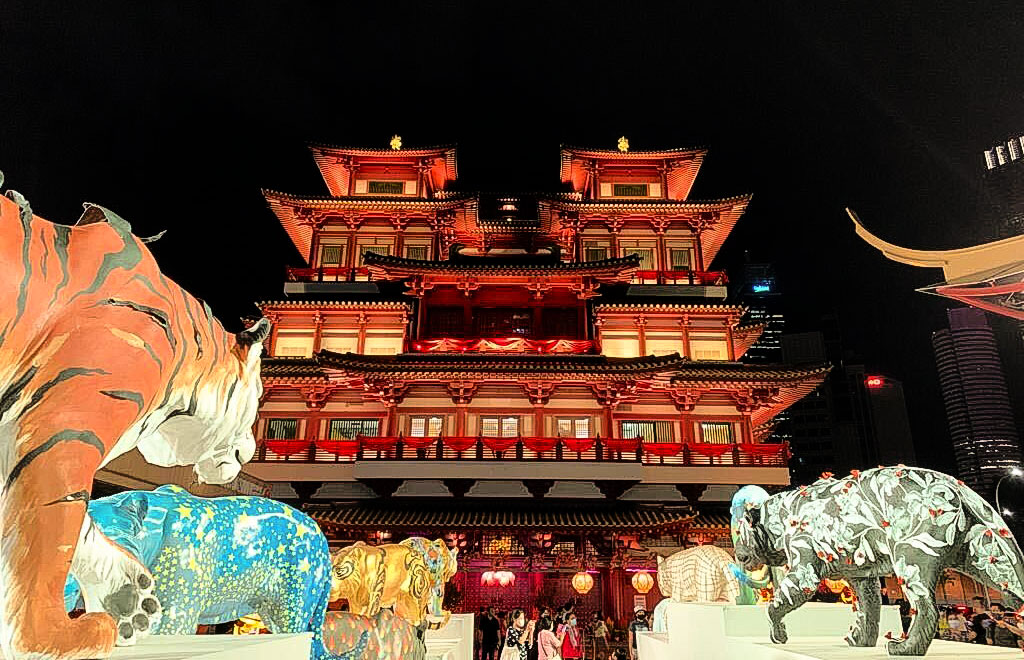
The business of good fortune



The weeks leading up to the celebration are the busiest for shop owners selling Chinese New Year decor and gifts.
“It’s actually looking a little bare at the moment,” James Chiew, a representative of a plant nursery selling festive celebration plants in Selangor, said as he looked around his nursery. “We were cleared out so quickly in the last few weeks. I’m so tired and I’m glad it’s ending soon.”

In Singapore’s Chinatown, central Temple street flushed red with the crowd of stalls selling trinkets with symbolic meanings to decorate the home. Strings of ornamental firecrackers and winding dragons signifying good fortune hung by embroidered door hangings shaped like fish (鱼 yú), a homophone for the word “abundance” (余, yú).
“It’s hard to say how business will be [compared to previous years],” said Janet Ng, a retailer and entrepreneur who operates a pop-up shop each year during the holiday period dedicated exclusively to Lunar New Year merchandise.
“It’s only the first day. Let’s see how the rest of the holiday plays out. The weather is good, so that’s got to be a good sign, “ Ng said, pausing in a moment between serving a line of customers. “Chinese New Year is important because, after the last two years, what else is there to look forward to? We need something to give us hope.”

All photos taken for the Southeast Asia Globe


